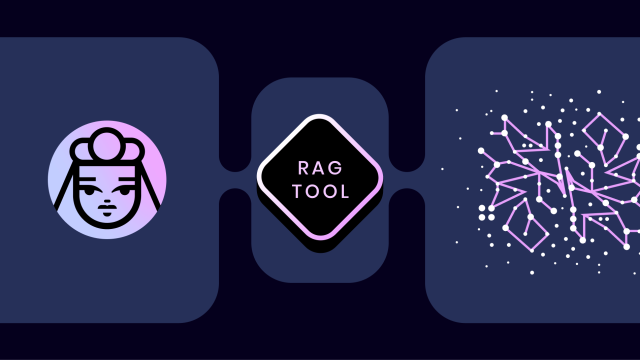Engineering
– 9 min read
Beyond the demo: What I’ve learned deploying production AI for enterprises

After nine months deploying AI at WRITER with enterprise clients like Uber, Franklin Templeton, and Commvault, the biggest lesson is this: successful AI projects start with crystal-clear business outcomes, use the simplest solution that works, and measure user impact over model metrics. The gap between impressive demos and production value comes down to disciplined problem-solving, not sophisticated technology.
The gap between a slick AI demo and a production system that actually drives business value is vast — and littered with failed projects. Over the past nine months as an AI engineer at WRITER, I’ve worked directly with enterprise customers like Uber, Franklin Templeton, and Commvault to deploy agentic AI solutions that solve real problems. It’s part solution design, part education, part problem diagnosis. But at its heart, the job is about helping people get real value from AI.
These aren’t best practices from a whitepaper — they’re battle scars from real deployments. If you’re an engineer, architect, or builder thinking about production-grade AI systems, here’s what I’ve learned in the field.
The outcome-first rule
If you can’t explain the business outcome in one sentence, you’re already failing.
I can spot a doomed AI project from the first stakeholder call. It usually starts like this: “The board is asking what our AI strategy is — we need to show something.” Compare that to: “We want to reduce internal ticket resolution time by 40%.”
“If you can’t explain the business outcome in one sentence, you’re already failing.” Click to share
The difference is everything. The first is a mandate in search of a problem. The second is a problem that can be solved, measured, and improved.
Here’s my framework for translating business pain into AI objectives: Start with the metric that keeps someone awake at night. Customer support response time. Contract review bottlenecks. Compliance report generation. Then ask: What does success look like in numbers? Not “better” or “faster” — actual numbers.
I worked with a client whose legal team was drowning in contract reviews. Instead of building “an AI legal assistant,” we focused on one outcome: reducing initial contract review time from four hours to 90 minutes. That clarity shaped every technical decision we made. We built a single-purpose agent that extracted key terms and flagged potential issues — not a sophisticated legal reasoning system. It worked because we knew exactly what “working” meant.
Vague mandates lead to scope creep, feature bloat, and projects that limp along for months without shipping. Clear outcomes lead to systems that get deployed, adopted, and improved.
Right-sizing your AI solution
Not every nail needs a sledgehammer — or an autonomous agent.
The biggest mistake I see teams make is reaching for the most sophisticated AI solution when a simpler one would deliver better results faster. At WRITER, we think about this as a spectrum of autonomy:
“Not every nail needs a sledgehammer — or an autonomous agent.” Click to share
Some agents don’t need autonomy at all. They need structured prompts, clear guardrails, and predictable outputs. Think auto-generating FAQ documents from your vacation policy or creating status reports from project data. These agents do one thing very well and fail gracefully when they encounter edge cases.
Some agents need a hybrid approach that combines deterministic processes with AI capabilities at specific decision points. A contract review workflow might use rule-based checks for standard clauses but call an LLM for semantic analysis of unusual terms. The key is knowing where context understanding adds value and where traditional logic is more reliable.
Some agents actually do need autonomy for open-ended tasks like deep research or complex problem-solving. These can reason, plan, and act independently, but they’re expensive — both computationally and in terms of unpredictable behavior.
The pattern I’m seeing: Teams default to autonomous agents because they’re impressive in demos, but L1 agents and workflows deliver more consistent business value. A simple FAQ generator that works 95% of the time beats a sophisticated reasoning system that works 80% of the time but costs 10x more to run.
“A simple FAQ generator that works 95% of the time beats a sophisticated reasoning system that works 80% of the time but costs 10x more to run.” Click to share
The MVP mindset
Your AI doesn’t need to be perfect — it needs to be measurably better.
AI systems need to teach you something with each iteration. The goal isn’t to replace human judgment completely — it’s to augment it in ways that create measurable improvement.
“Your AI doesn’t need to be perfect — it needs to be measurably better.” Click to share
My experimentation framework starts with a hypothesis: “This AI system will generate first drafts of deliverables 50% faster than our current process.” Then I define success metrics (draft quality, time savings, user adoption) and failure thresholds (how often can it mess up before users lose trust?).
The key is carrying clients along as you think through these questions. What does “50% faster” mean for their workflow? How do they currently handle edge cases, and what’s an acceptable failure rate for the AI version? Building failure handling into the user experience — reprompting, human-in-the-loop reviews, clear confidence scoring — is often more important than improving the underlying model.
I learned this working with a client’s research team. Instead of trying to build a perfect research agent, we created a system that could produce good-enough research briefs that researchers could then refine. The 70% time savings from having a solid starting point was more valuable than waiting for a system that could produce perfect final reports.
The point of your MVP is to learn quickly and iterate. Perfect is the enemy of shipped.
UX as your secret weapon
Good AI guides users instead of making them guess.
Not all AI solutions are chatbots, and frankly, most shouldn’t be. Chatbots are open-ended and put the onus on users to prompt effectively to get value — essentially turning every user into a prompt engineer. The average enterprise user doesn’t have the patience to learn this skill and gives up entirely.
But there’s another problem: prompting styles differ from person to person. In situations where you need consistent results that follow team or organizational guidelines, having individuals prompt in their own unique ways creates inconsistent outputs.
I saw this firsthand while building a company profile generation agent for a client. Their team needed standardized outputs that followed specific formatting guidelines. If we’d used a chatbot interface, individual prompting variations would have created inconsistent results across their organization.
“Good AI guides users instead of making them guess.” Click to share
The interface matters as much as the intelligence behind it. How you present results, build trust, and integrate into existing workflows determines whether your AI gets adopted or abandoned.
For financial research agents, I’ve learned that a clean combination of text summaries, data tables, and charts works better than conversational responses. Users want to scan information quickly, not chat their way through analysis. The format should match how people consume that type of information.
Trust comes from transparency. Show your work. When an AI system makes a recommendation, users need to see the reasoning chain, the sources it references, and its confidence level. I build this into every interface — not buried in logs, but visible in the UI where users make decisions.
Distribution strategy is equally critical. Do you need a fully crafted web experience, or should this launch via Slack, where people already work? I’ve seen brilliant AI systems fail because they required users to adopt new tools instead of meeting them where they already are.
The most successful deployment I worked on was a compliance report generator that lived inside the client’s existing document management system. Users didn’t think of it as “using AI”—they just noticed their reports took 20 minutes instead of two hours to create. That’s invisible AI working.
Evaluation: the make-or-break factor
Most teams aren’t measuring the right things.
Too many AI projects die because there’s no clear definition of success. Teams optimize for model metrics that don’t correlate with business outcomes, or they rely on manual testing that doesn’t scale to production edge cases.
“Sometimes the best response to poor AI performance is better UX design, not more training data.” Click to share
The most common mistake is focusing on accuracy scores instead of user impact. A document generation system with 90% technical accuracy is useless if users don’t trust it or if the 10% failure rate hits critical workflows. Better to measure: How often do users accept the AI’s first draft? How much time do they save per task? How has error rate changed in the overall process?
My production evaluation framework includes automated testing for common scenarios, A/B testing for workflow variations, and feedback loops that connect user behavior back to system improvement. When users consistently reject certain types of AI suggestions, that’s data about where the system needs work — or where the workflow needs redesign.
The feedback loop is crucial: Are you seeing patterns in failures that suggest model retraining, or do they point to architectural changes? Sometimes the best response to poor AI performance is better UX design, not more training data.
Emerging patterns
The enterprise AI landscape is evolving fast. Multi-agent systems are gaining real traction — not just as demos, but as production architectures for complex workflows. The split between AI-native applications and AI-augmented existing software is becoming clearer, with different technical and business implications.
I’m also seeing a skills gap emerge. Enterprise AI teams need people who understand both the technology and the business context — engineers who can translate between what’s possible and what’s valuable. The regulatory environment is shaping technical decisions more than most teams expect, especially in financial services and healthcare.
Building AI that works
Enterprise AI is still early, but the patterns are becoming clearer. The teams succeeding in production aren’t necessarily the ones with the most sophisticated models — they’re the ones with the clearest outcomes, the right-sized solutions, and the honesty to measure what matters.
The gap between demo and production will close as more teams share what actually works in the real world. With clear objectives, thoughtful architecture decisions, and user-focused design, we can build AI systems that deliver on the promises everyone’s making.






